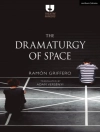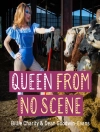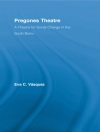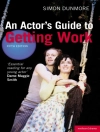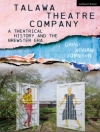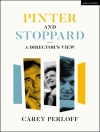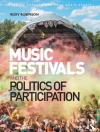A case study of one specific substantial three-part project inspired by the work of William Shakespeare. Three interconnected performances that interrogate roles in the theatre-making process, along with essays that contextualize the themes and approaches of the work, serve as provocations for the acts of dramaturgy the work entailed, juxtapose new writing and performance writing, and problematize the notion of playtexts.
Taking as their starting point a stage direction or a moment in the narrative that is not the main focus, the playtexts recontextualize, deconstruct and disorientate the classic text within a landscape that is more polarized, free from the text and inherently and explicitly aware of its own theatricality. The work negotiates the ever-shifting relationship between the text and its performance, the performers and their audience, whilst acknowledging that Shakespeare often employed a play-within-a-play as a device, what we now call a meta-theatrical mode of representation.
The three playtexts are The Beginning, an interpretation of A Midsummer Night’s Dream, The Middle, a deconstruction of Hamlet, and The End, triggered by a stage direction from The Winter’s Tale. Shown together as The Trilogy, each play asks the audience to enter a world where a performance can be a rehearsal, text can be both script and set … and they are always aware of where the fire exits are. The playtexts are presented with essays from a range of contributors that reflect on their poetics, themes and concerns in relation to dramaturgy.
Brings together scholarship and creative work, places them in dialogue with each other and does so from a wide range of perspectives: from those involved in the process, those in the margins of that process and those encountering the works without having been part of that process. The particular strengths of this challenging but accessible book are in the ways it places these perspectives in conversation with and through dramaturgy, and contributes a dialogue about making and reflecting text and performance.
A rich and thought-provoking text that has the potential to move the dialogue on dramaturgy forward both among practitioners and academics. It is a fresh, intellectually invigorating read; the change of perspective and the playful structure that brings a recognisable five-act dramatic structure and academic elaboration together keeps readers focused and guides them through the book. Very conscious of its own unorthodox format – a combination of script and reflection, by a variety of voices – which is certainly part of the freshness of the book and part of its appeal.
Primary readership will be among practitioners, academics and researchers in the field of dramaturgy, teaching, devising, writing for performance and non-linear narrative; performance students making or reflecting on their own devised performance work; postgraduate students who are engaged in making practice as research.
Also of relevance and interest to makers and scholars of theatre and performance, alongside those interested in creative critical writing; to those interested in how we make, and reflect on, theatre and performance; those interested in contemporary dramaturgy and embedded criticism; and those studying theatre and performance, and interdisciplinary practice research.
Содержание
Act One: Shedding
Act Two: Picking
Act Three: Raveling
Act Four: Battening
Act Five: Taking up
Об авторе
Michael Pinchbeck is Professor of Theatre and Senior Research Lead for the Department of Art & Performance at Manchester Metropolitan University, UK. He is a writer and theatre maker based in Nottingham and has toured extensively. His research explores dramaturgy, scores, practice-as-research and the performance of commemoration.


